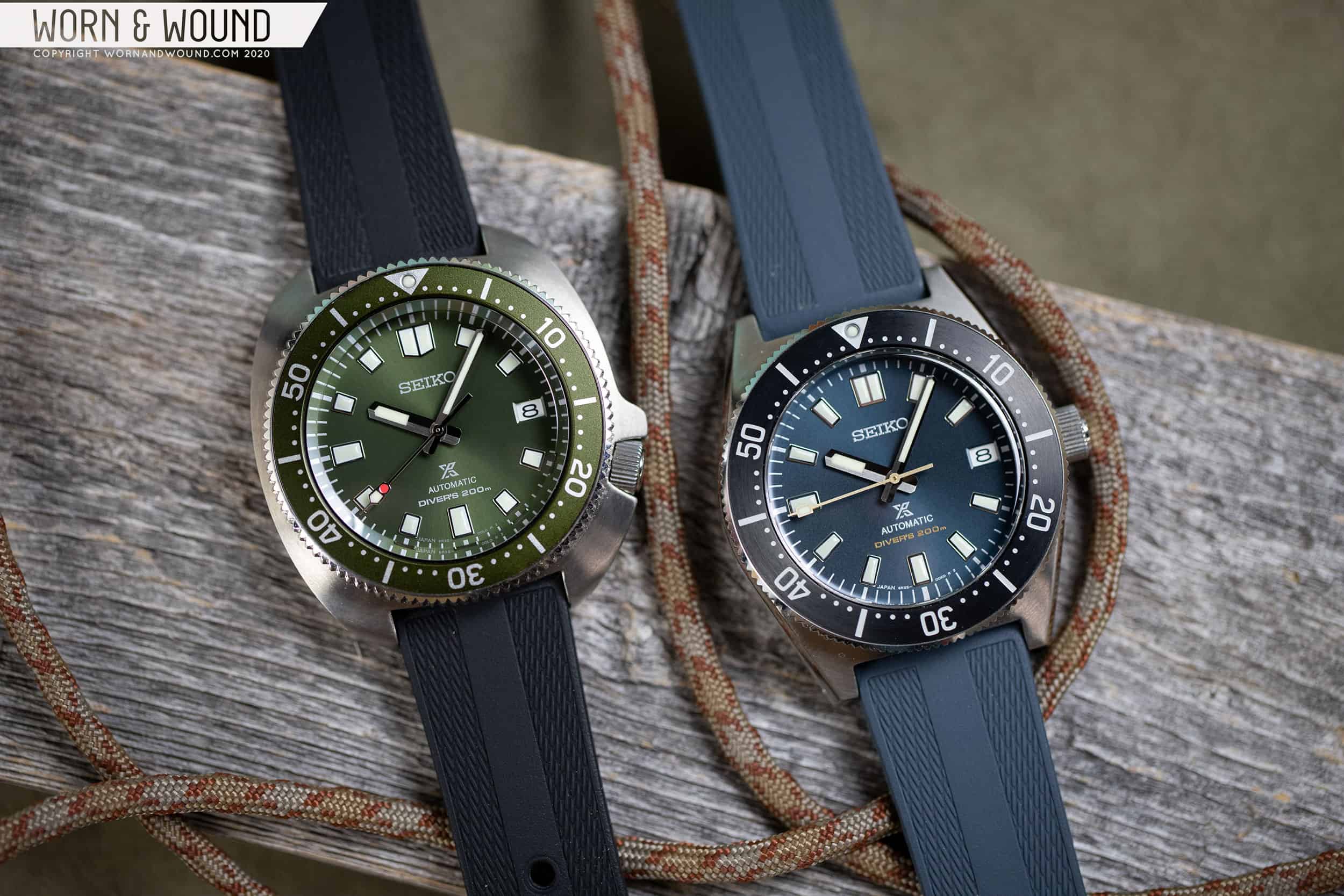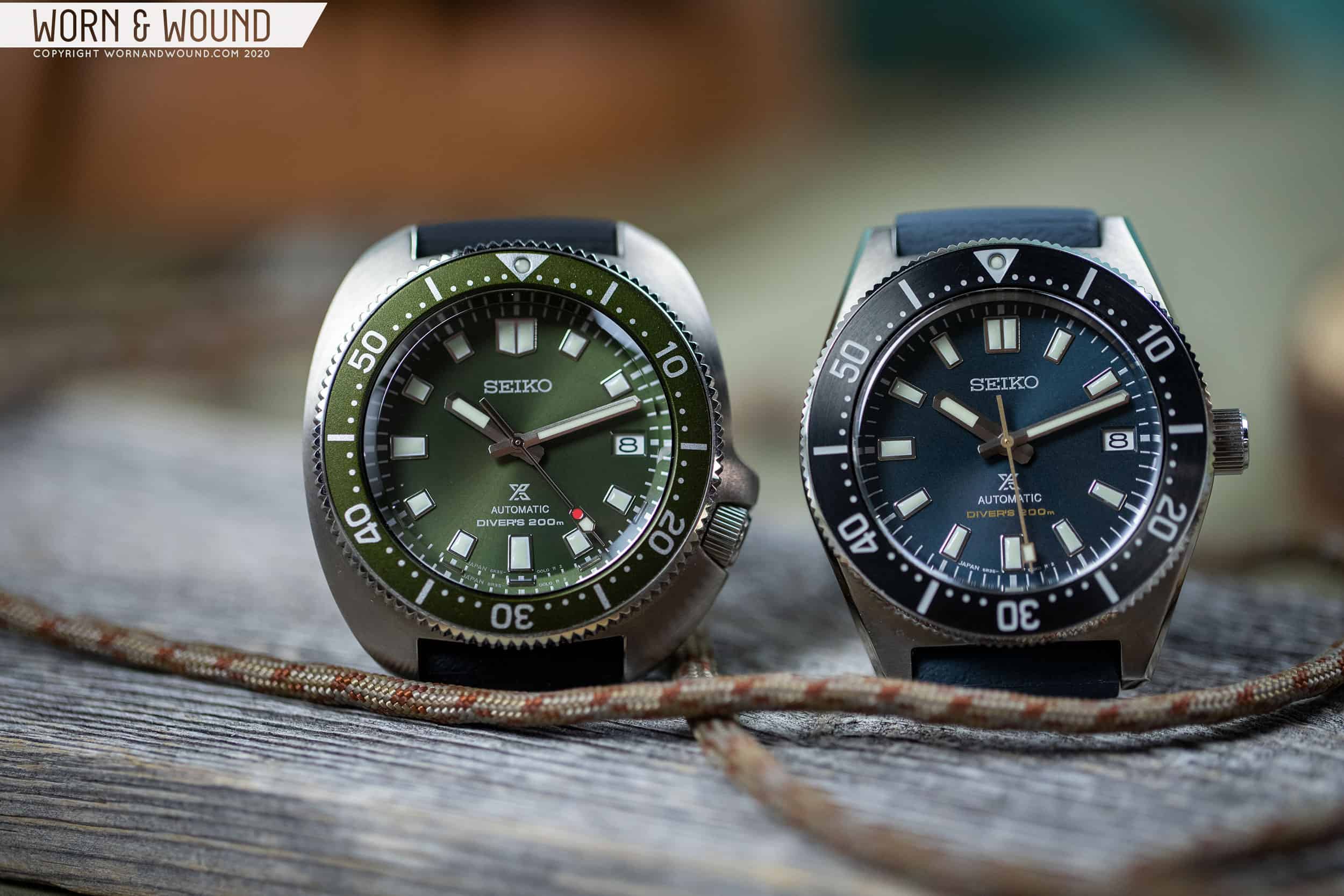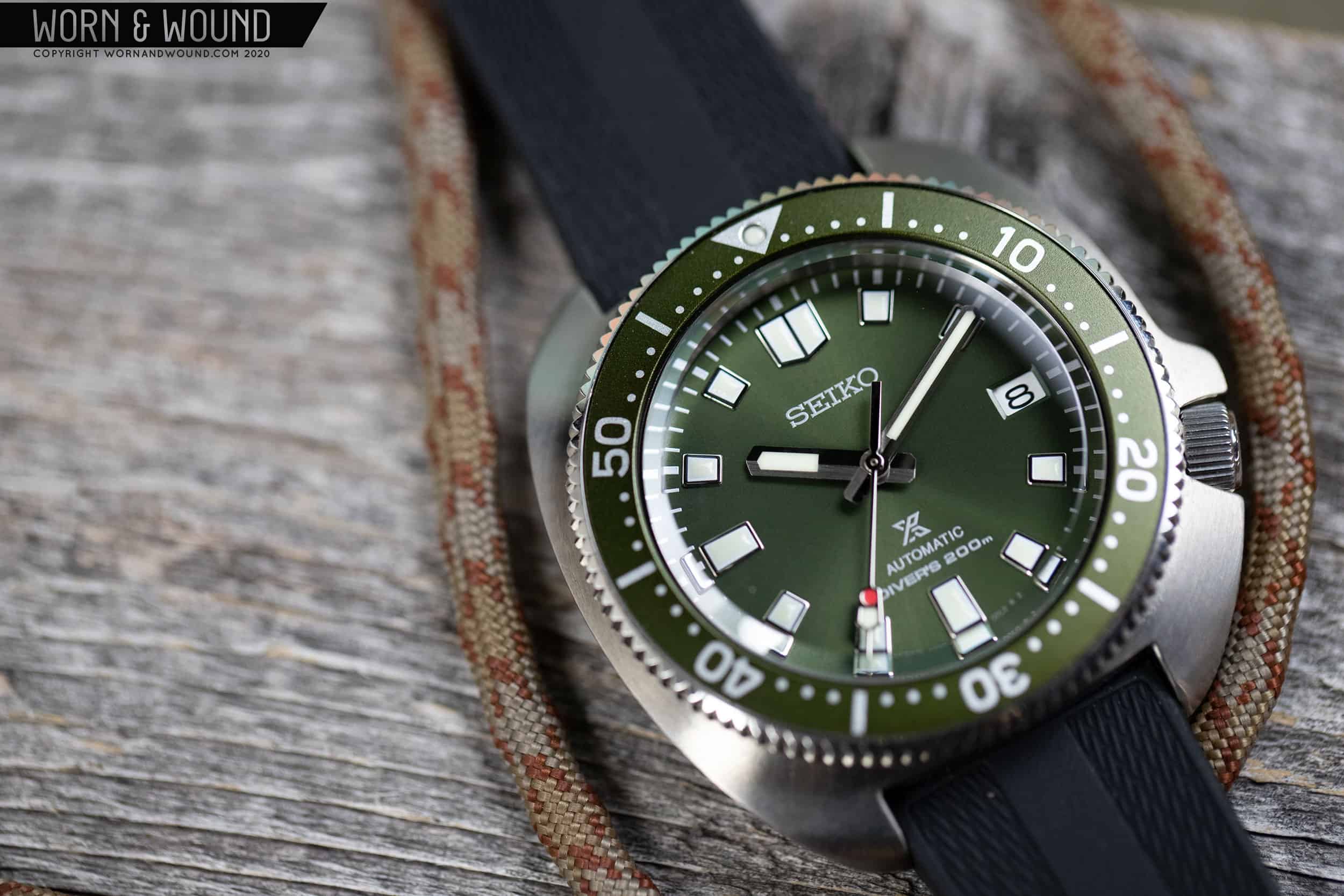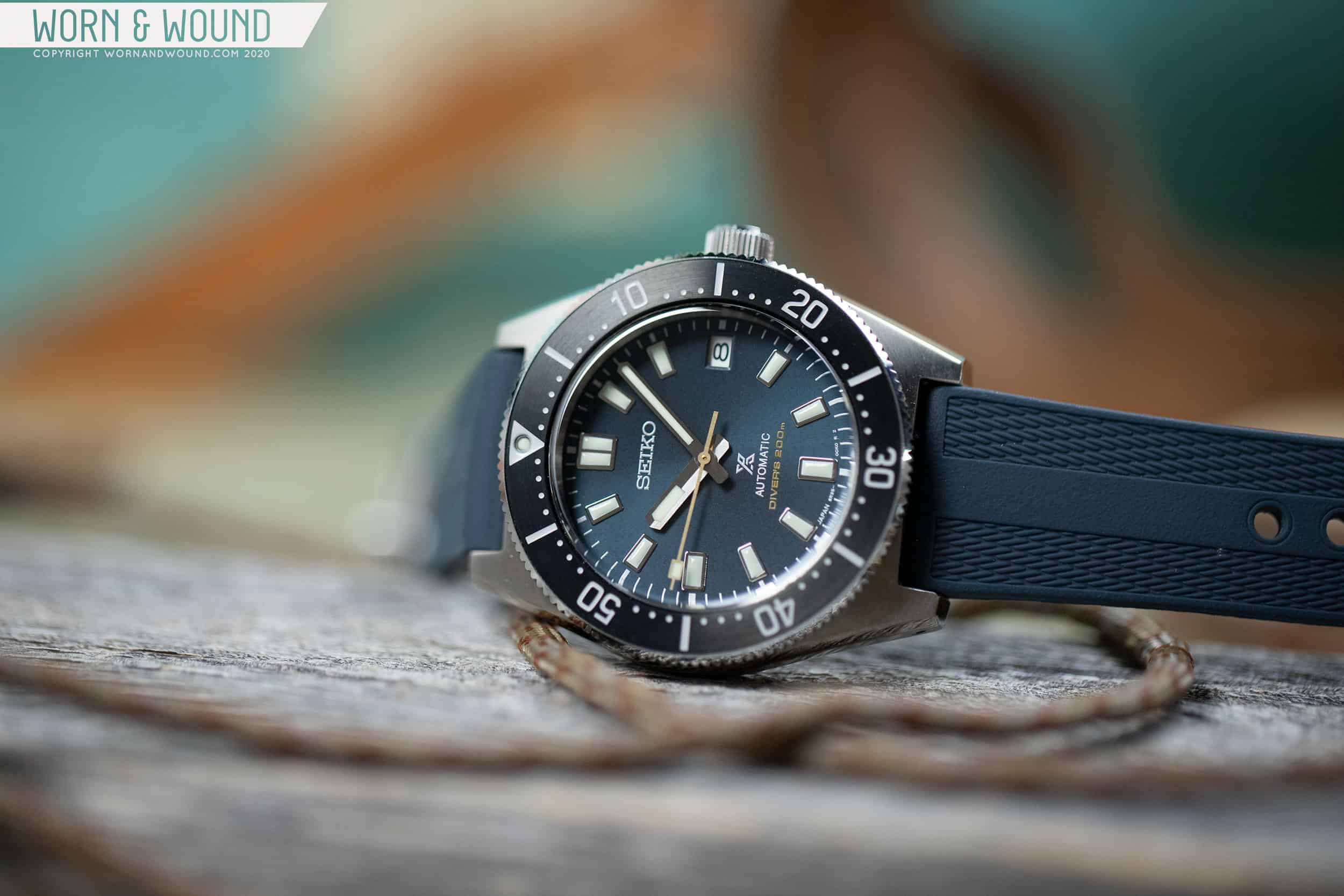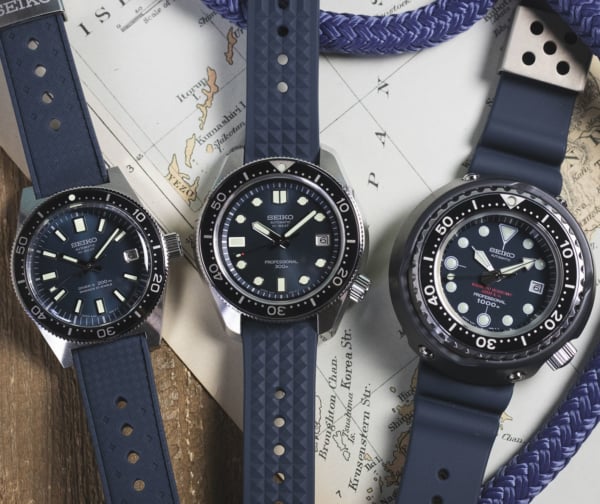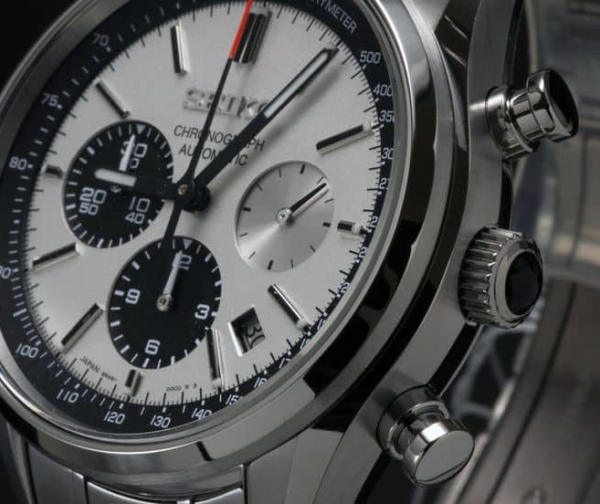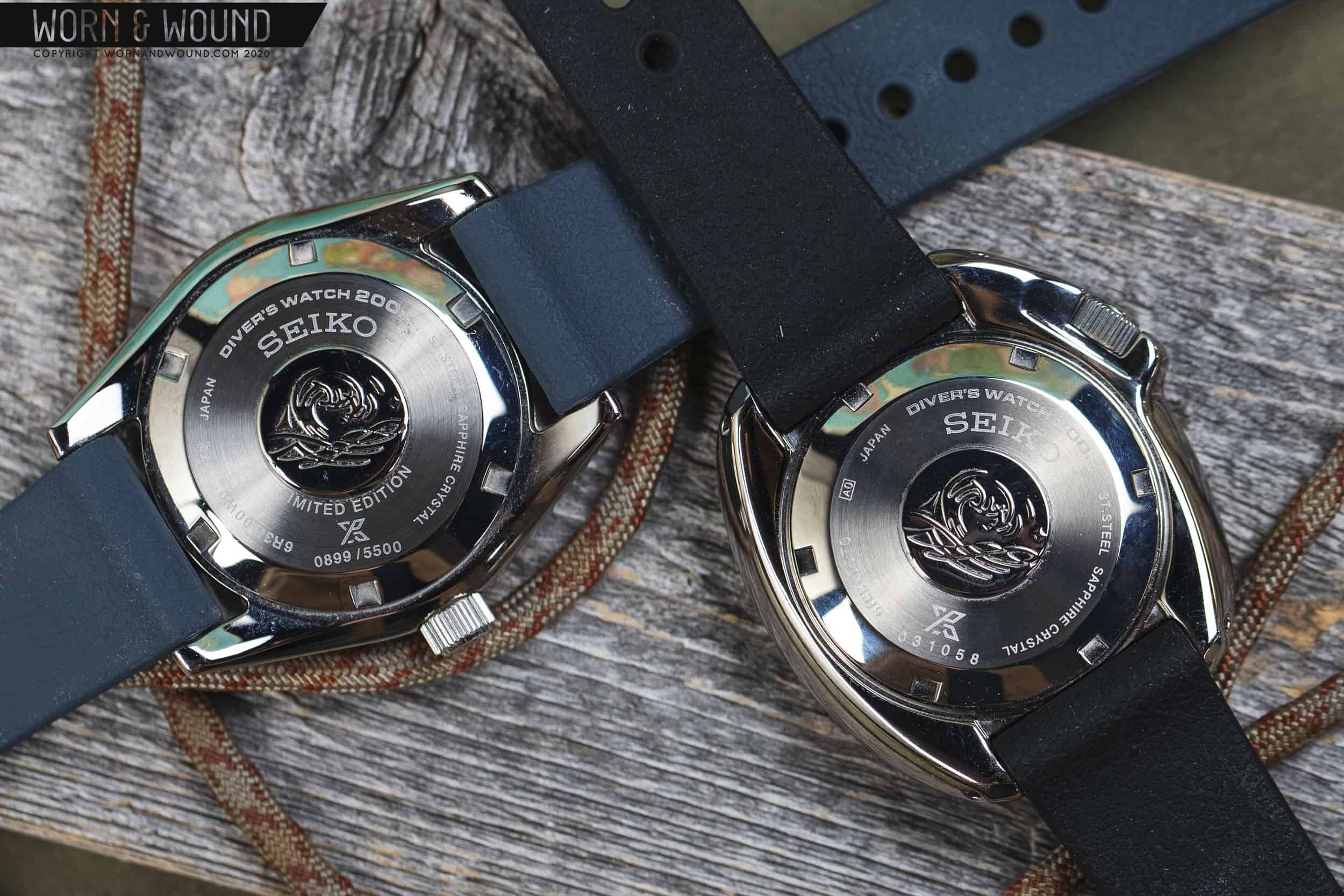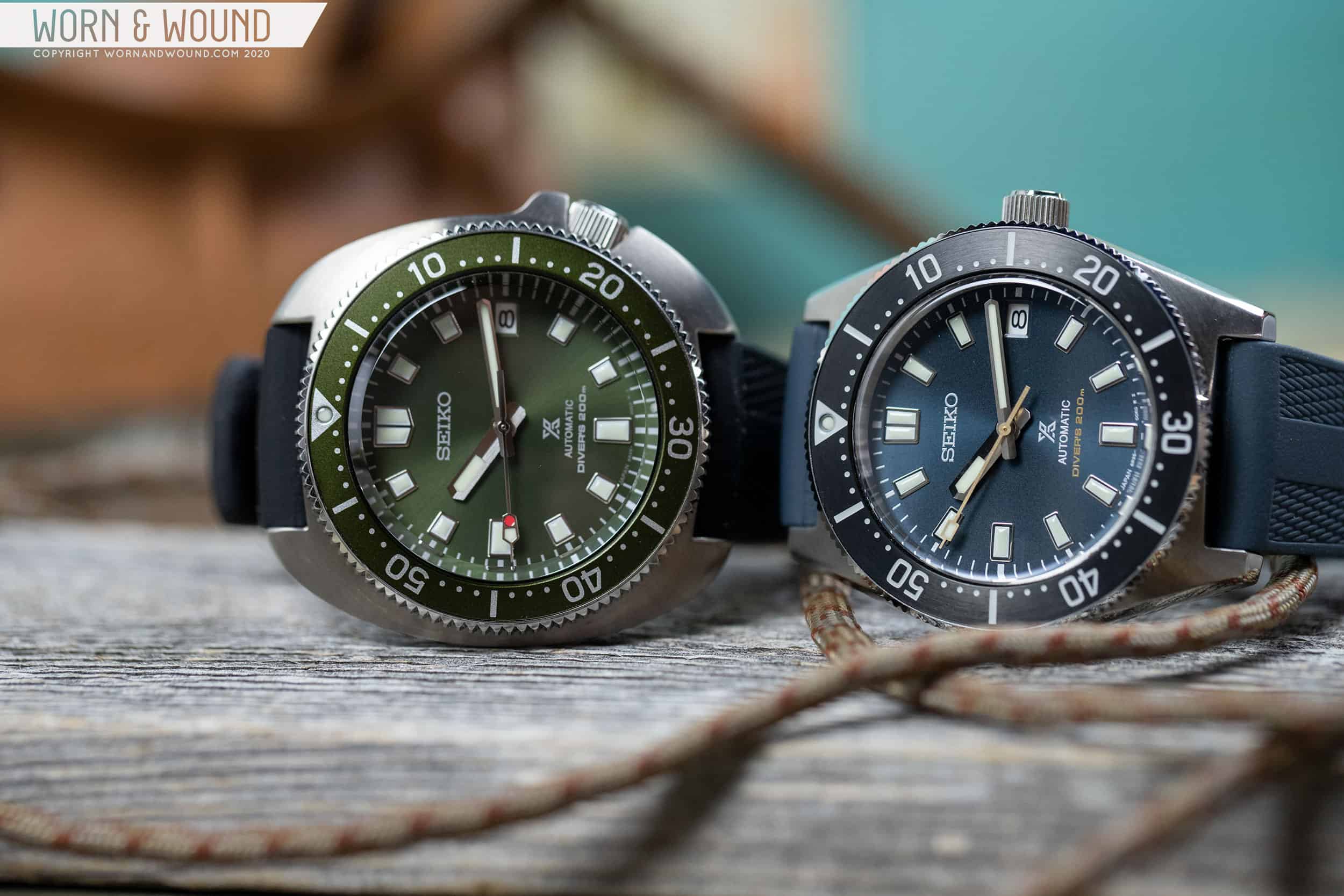When we look back at the end of a year in watches, it seems like Seiko releases are always a highlight. They never have a bad year, and consistently deliver on both enthusiast focused favorites and more mass market, mainstream watches that are their bread and butter. This year, though, it felt like they were throwing 100 miles per hour from the start and never let up. While everyone will have their own personal favorites, here at Worn & Wound the conversation was mostly focused on the SPB149 (and the variants released alongside it) and the SPB151/153, the new diver that’s a riff on the famed “Captain Willard.” These watches, both around $1,000 and part of the Prospex line, have a premium feel to them that makes them a compelling value proposition, even at a price point that’s higher than the traditional entry point into the Seiko range, challenging what we think of when we consider “entry level” Seiko in the first place.
Seiko’s Big Year: Two New Dive Watches and How they Reshaped the Watch Landscape in 2020
Seiko divers have a strange way of bonding the watch community together. Almost everyone has owned an entry level or slightly elevated Seiko diver at one point or another. And if you haven’t, you’ve perhaps made a conscious decision not to. In our community, an inexpensive Seiko diver is a right of passage in the truest sense. They are so often the first watch that’s recommended to newcomers, and if you catch the watch bug at this point, you’re likely to move on to any number of other things (including more Seikos). The SKXs and Monsters of the world have a familiarity to them that watch lovers get like the back of their hand, and first time owners come to understand quickly. They’re tough, good looking in a funky way, and often have a ragtag charm about them. They laugh at refinement. So as higher priced divers in the Prospex line have emerged over the last few years as Seiko has filled out their already extensive catalog, it’s no surprise that some longtime Seiko nuts are skeptical of spending twice as much (or more) for something that feels so familiar.
To add to that, the SPB149 and the SPB153 have, of course, come to market at a strange time. Both of these watches generated quite a bit of traction upon their release, and we’ve all seen them pop up over and over again on Instagram and throughout watch media, but it’s impossible not to wonder how they would have been received in a normal year, when ADs were open without restrictions, and watch meetup groups could get together in person, and not strictly on Zoom calls. It’s important to see all watches in the metal to properly evaluate them, but I’d argue that’s even more so the case with these new releases from Seiko, as so much of their appeal lies in the upgrade they represent over less expensive watches in the Seiko catalog. While I think ultimately these upgrades are substantial when considered together, they don’t necessarily scream out as obvious in photos or in the specs. Subtle finishing details, the action of a crown and a bezel, and the watch’s weight in the hand and feeling on the wrist, really need to be experienced in person. We were robbed of that experience this year, and I wonder if it means that these watches will have legs into 2021 as more people get to experience them for the first time, and they inevitably begin to turn up at a discount on the pre-owned market.
It’s to Seiko’s credit that if you bought one of these watches sight unseen, as I imagine a great many of you did, your expectations were almost certainly exceeded when you saw it in the metal for the first time. I’ve always felt that this initial experience when you unbox and first lay eyes on a watch is of critical importance. When you’ve just spent a considerable amount of money on something, it needs to leave a positive impression right away if you’re going to live with it and enjoy it for any length of time, and I can’t imagine someone seeing one of these for the first time and being underwhelmed.
Unfortunately, being underwhelmed at an entry level watch has developed into something of an art form. We’re taught by experts on the forums and in reviews like those on this site what represents good value, and what is forgivable when it comes to cutting costs so an ISO certified diver can be delivered to any consumer all over the world for a few hundred bucks. There was a time not too long ago when the de facto recommendation for an inexpensive dive watch for a new enthusiast was a fairly plain and non-descript diver with a chintzy bracelet and a movement that you had to shake to get started. I have fond memories of the SKX and its many derivatives, but Seiko has turned a corner since those watches became ubiquitous enthusiast favorites, and we’re all better off. While the Willard and new SPBs are more expensive than the SKX ever was (and indeed there’s an entire segment of Turtles, Monsters, and more that sit at a price point between entry-level and the watches seen here), they still reside on the value end of the spectrum, and represent a quantum leap in terms of overall quality. No more shaky starts or ho-hum finishing – these are watches that anyone would be proud to own for years without feeling that an upgrade was necessary at some point. In my experience, and from chatting with other enthusiasts, few people want to continue wearing their SKX, or even their Turtle, after they’ve leveled up, unless it’s for a nostalgic walk down memory lane. Those are watches that hook you in, teach you about your own taste, and set the course for whatever is next. The newer Prospex watches have an appeal that’s decidedly more long term.
I don’t wish to denigrate the SKX, the Turtle, or whatever your favorite value oriented Seiko diver happens to be, but I think with these new watches a strong case can be made for jumping right to that $1,000 bracket, if you can. I think the improvement in overall quality, by every metric, is substantial enough that in the very long run your “cost per wear” calculation is going to be more favorable with the Willard, SPB149, or similar variant. I say that because I think these watches have an appeal that will be as durable as the watches themselves. If you’re new to the hobby, they will impress from the start, and likely create a new enthusiast upon unboxing. If you’re just a guy looking for a nice watch to wear day in and day out, these will do the job and each has a timeless aesthetic that won’t look out of place in 10, 20, or 30 years. And if you’re already a collector, and have run the gauntlet on Seiko divers through the years, the quality here will be immediately apparent, and maybe make you reconsider what Seiko means to you.
Both the SPB149 and SPB153 have already been reviewed on the site, and I don’t have a whole lot to add that hasn’t been said. If you haven’t yet, you should read Ed’s review of the Willard, and Zach’s review of the SPB149 for thorough breakdowns of their extended experiences with them. I can only echo their praise – these watches both have a quality about them that is a significant step up from whatever is in the category right below it. That is to say, the value apparent in the new watches is more substantial than the actual cost to jump pricing tiers.
I want to be careful here, because the last thing that I’d ever intend to suggest is that you should spend beyond your means, or that a watch like the Turtle isn’t worthy. It absolutely is. But this year, maybe more than in years past, I’ve thought about watches that I know I want to own for the long term. This newer generation of Prospex watches from Seiko offer something that feels like it has heirloom potential, and not merely a box to check off in a collection.
The reasons why are subtle and hard to pin down, but it has something to do with the surprisingly intricate finishing on each watch, and the refinement of the wearing experience. The Captain Willard, for example, has the outward appearance of something slightly avant-garde, with a pronounced crown guard extending from the lower half of the case. But on the wrist, the watch feels normal, comfortable, and light, thanks to the shorter-than-you’d-think lug to lug span of 46.6mm. Despite the brutish appearance, this watch is compact, and has altogether classic proportions.
The SPB149 is special because it feels like a new centerpiece of Seiko’s collection. The 149 is a limited edition variant for collectors and enthusiasts, but the standard 143, 145, and 147 are permanent additions to the collection, and represent something that Seiko has been building toward for years: a contemporary expression of the legendary 62MAS, the dive watch that essentially created a design language for the brand. After a great many limited editions and watches that could be seen as an attempt to capture the spirit of that diver, Seiko has crafted a wearable, affordable, and thoroughly modern version of the 62MAS that doesn’t scream “reissue!” but does the tricky work of standing on its own while clearly being an echo of the past. I don’t think it’s too much to equate the 62MAS, and these new versions of it, to a watch like the Rolex Submariner, or the Cartier Tank. They all have a deeply important role in the history of their brands, and serve as jumping off points for so many other watches made by those same firms. This is Seiko’s iconic design object, repurposed for 2020 and way, way beyond – and it’s about $1,000. To me, that makes it a little bit special, and worth saving for if you had your eye on a Turtle or a gently used SKX.
Spending time with both of these watches was, of course, a treat. Seeing them sitting on my desk for a few weeks served as a regular reminder of the importance of Seiko not just in the business of watches, but in the community that this hobby has created for myself and so many others. As a collector I often find myself looking for the things that are hard to find – rare variants, watches long out of production, and so forth. But there’s something comforting about the ubiquity of watches like these. Again, they connect us. When we share them at watch meetups (which we’ll do again next year, I’m sure of it) they inspire us to think differently about the hobby, send us on wild tangents (and goose chases), and get newcomers excited about horology. In an enthusiast space, it’s easy to dismiss something that’s popular because we all want to be unique, and develop the most blistering take on whatever has captured our attention at the moment, but there’s value in sharing the things that we all love, too.
Both of these watches are wonderful to wear, and I’d recommend either or both without any reservations, but for me it’s the SPB149 that really sings (although, if I had to buy one with my own cash, I’d probably be gunning for the gray dialed SPB143). I was a little surprised by this, and I think those who know my taste might be too, as I tend to be drawn to unusual case designs, love a green dial, and count Apocalypse Now among my favorite films. In the end, I was won over by the ingenious way Seiko has reimagined the 62MAS, and given this watch a series of small, premium touches that really add up (the polished bevel, the sunburst dial, and the fine radial finishing on the bezel are all highlights). This watch feels foundational to me.
Is $1,000 an entry level price for a watch? It honestly feels a little gross to the frugal side of my brain to even entertain the idea. Trust me, $1,000 was far from my own entry point into the hobby, and I still get a lot of enjoyment from watches that cost far less. That same part of me recoils at the idea of telling someone who has perhaps never purchased a mechanical watch that a solid grand is where you have to start when there are perfectly fine watches to be had for half the price. It’s a difficult mental state to put yourself in, even for some enthusiasts who have been at this happily for years. But I think what makes these watches worthy of that go-to “first watch” recommended status is that for $1,000 you’re getting something that’s actually exceptional, from an important brand, and can take you wherever you want or need to go, whether that’s down the collecting rabbit hole, or just along for the ride on your adventures for the rest of your days. Another way to put it: it’s only an entry level watch if you intend to move on to whatever comes after. These Seikos, I think, are deeply rewarding, and equally so for the seasoned enthusiast, newcomer to the scene, and the completely normal person who just wants something great on his wrist.









 Featured Videos
Featured Videos




